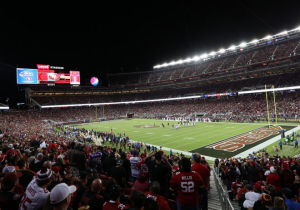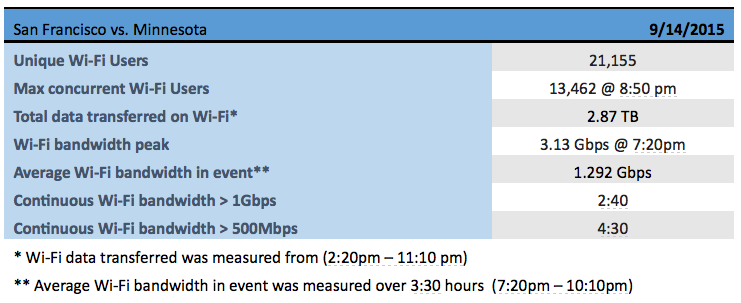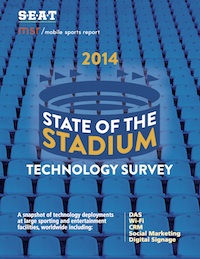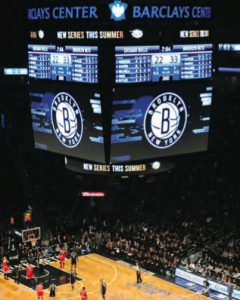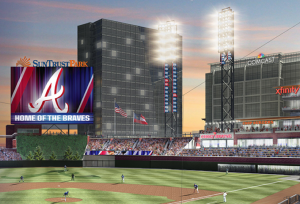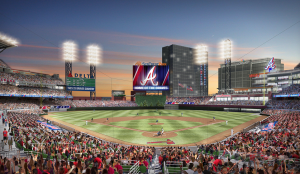Editor’s note: The following team-by-team capsule reports of NFL stadium technology deployments are an excerpt from our most recent Stadium Tech Report, THE PRO FOOTBALL ISSUE. To get all the capsules in one place as well as our featured reports, interviews and analysis, download your free copy of the full report today.
AFC SOUTH
Reporting by Paul Kapustka

Houston Texans
NRG Stadium
Seating Capacity: 71,054
Wi-Fi – No
DAS – Yes
With Super Bowl LI approaching in 2017, NRG Stadium is rumored to be (finally) getting Wi-Fi, with reports that the deployment will be led by 5 Bars and use gear from Ruckus Wireless; however none of this has yet been formally approved, so for now it’s another fall with no Wi-Fi at NRG.
Indianapolis Colts
Lucas Oil Stadium
Seating Capacity: 63,000
Wi-Fi – Yes
DAS – Yes
According to stats from this year’s Final Four basketball weekend, the Wi-Fi and cellular connectivity at Lucas Oil Stadium is working just fine, with just about 11 terabytes of traffic measured over the hoops-happy weekend. According to organizers, the stadium’s Wi-Fi carried more than 5 TB of traffic, which should prove stable enough for Colts fans this fall.
Jacksonville Jaguars
EverBank Field
Seating Capacity: 67,297
Wi-Fi – Yes
DAS – No
Jacksonville fans who are not inside one of the two pools at EverBank Field can use the free Wi-Fi provided by Extreme and SignalShare, with bandwidth provided by Comcast. EverBank also has Wi-Fi “coaches” to help fans connect to the network, reportedly wearing bright yellow hats.
Tennessee Titans
Nissan Stadium
Seating Capacity: 69,149
Wi-Fi – Yes
DAS – Yes
Another outfit by Extreme Networks, Titans fans are into the second year of stadium-wide Wi-Fi, at the newly named “Nissan Stadium” thanks to a sponsor change this summer.
